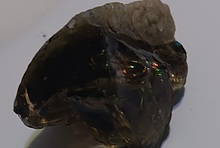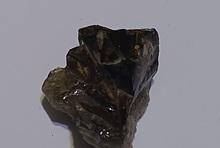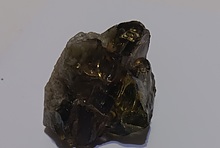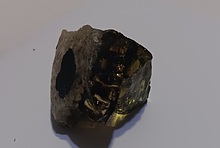Home PageAbout MindatThe Mindat ManualHistory of MindatCopyright StatusWho We AreContact UsAdvertise on Mindat
Donate to MindatCorporate SponsorshipSponsor a PageSponsored PagesMindat AdvertisersAdvertise on Mindat
Learning CenterWhat is a mineral?The most common minerals on earthInformation for EducatorsMindat ArticlesThe ElementsThe Rock H. Currier Digital LibraryGeologic Time
Minerals by PropertiesMinerals by ChemistryAdvanced Locality SearchRandom MineralRandom LocalitySearch by minIDLocalities Near MeSearch ArticlesSearch GlossaryMore Search Options
The Mindat ManualAdd a New PhotoRate PhotosLocality Edit ReportCoordinate Completion ReportAdd Glossary Item
Mining CompaniesStatisticsUsersMineral MuseumsClubs & OrganizationsMineral Shows & EventsThe Mindat DirectoryDevice SettingsThe Mineral Quiz
Photo SearchPhoto GalleriesSearch by ColorNew Photos TodayNew Photos YesterdayMembers' Photo GalleriesPast Photo of the Day GalleryPhotography
╳Discussions
💬 Home🔎 Search📅 LatestGroups
EducationOpen discussion area.Fakes & FraudsOpen discussion area.Field CollectingOpen discussion area.FossilsOpen discussion area.Gems and GemologyOpen discussion area.GeneralOpen discussion area.How to ContributeOpen discussion area.Identity HelpOpen discussion area.Improving Mindat.orgOpen discussion area.LocalitiesOpen discussion area.Lost and Stolen SpecimensOpen discussion area.MarketplaceOpen discussion area.MeteoritesOpen discussion area.Mindat ProductsOpen discussion area.Mineral ExchangesOpen discussion area.Mineral PhotographyOpen discussion area.Mineral ShowsOpen discussion area.Mineralogical ClassificationOpen discussion area.Mineralogy CourseOpen discussion area.MineralsOpen discussion area.Minerals and MuseumsOpen discussion area.PhotosOpen discussion area.Techniques for CollectorsOpen discussion area.The Rock H. Currier Digital LibraryOpen discussion area.UV MineralsOpen discussion area.Recent Images in Discussions
Mineralogical ClassificationIMA 2013-032 = gurimite; IMA 2015-045 = hexacelsian
27th Oct 2017 09:51 UTCMarco E. Ciriotti Manager
▪ Galuskina, I.O., Galuskin, E.V., Vapnik, Y., Prusik, K., Stasiak, M., Dzierżanowski, P., Murashko, M. (2017): Gurimite, Ba3(VO4)2, and hexacelsian, BaAl2Si2O8 – two new minerals from schorlomite-rich paralava of the Hatrurim Complex, Negev Desert, Israel. Mineralogical Magazine, 81, 1009-1019.
Abstract:
Two new barium-bearing minerals – gurimite, Ba3(VO4)2 (IMA2013-032) and hexacelsian, BaAl2Si2O8 (IMA2015-045) were discovered in veins of paralava cutting gehlenite-flamite hornfels located in the Gurim Anticline in the Negev Desert, Israel. Gurimite and hexacelsian occur in oval polymineralic inclusions in paralava and are associated with gehlenite, pseudowollastonite or wollastonite, rankinite, flamite, larnite, schorlomite, andradite, fluorapatite, fluorellestadite, kalsilite, cuspidine, aradite, zadovite and khesinite. Gurimite and hexacelsian form elongate crystals <10 μm thick. The minerals are colourless and transparent with a white streak and vitreous lustre, and have (0001) cleavage, respectively good in gurimite and very good in hexacelcian. Fracture is irregular. Density calculated using empirical formulas gave 5.044 g·cm-3 for gurimite and 3.305 g·cm-3 for hexacelsian. Mean refractive indexes, respectively, 1.945 and 1.561, were also calculated using the empirical formulas and the Dale-Gladstone relationship. The minerals are uniaxial and nonpleochroic. The following empirical crystal chemical formulae were assigned to holotype gurimite: (Ba2.794K0.092Ca0.084Na0.033Sr0.017)Σ3.020(V5+1.827S6+0.091P50.051Al0.040Si0.005Fe3+ 0.005)Σ2.017O8, and holotype hexacelsian: (Ba0.911K0.059Ca0.042Na0.010)Σ1.022Al1.891Fe3+ 0.072Si2.034O8. Raman spectrum of hexacelsian is similar to the one of the synthetic disordered β-BaAl2Si2O8. The Raman spectrum of gurimite is identical to that of synthetic Ba3(VO4)2. The EBSD pattern of gurimite was fitted to the structure of its synthetic analogue with the cell parameters of R3m, a = 5.784(1), c = 21.132(1) Å, V = 612.2(2) Å3, Z = 3, giving a mean angular deviation = 0.43º (good fit). The Raman spectra of hexacelsian and its EBSD pattern suggest that natural hexacelsian corresponds to disordered synthetic β-hexacelsian P63/mcm, a = 5.2920(4) Å, c = 15.557(2) Å, α = β = 90º, γ = 120º. We suggest that after relatively fast crystallization of the main constituents of the paralava, gurimite, hexacelsian and also other Ba-bearing phases crystallized from residual melt enriched in incompatible elements that filled interstices between crystals of the main constituents.

28th Oct 2017 09:05 UTCHans Kloster




Mindat.org is an outreach project of the Hudson Institute of Mineralogy, a 501(c)(3) not-for-profit organization.
Copyright © mindat.org and the Hudson Institute of Mineralogy 1993-2024, except where stated. Most political location boundaries are © OpenStreetMap contributors. Mindat.org relies on the contributions of thousands of members and supporters. Founded in 2000 by Jolyon Ralph.
Privacy Policy - Terms & Conditions - Contact Us / DMCA issues - Report a bug/vulnerability Current server date and time: April 19, 2024 04:32:06
Copyright © mindat.org and the Hudson Institute of Mineralogy 1993-2024, except where stated. Most political location boundaries are © OpenStreetMap contributors. Mindat.org relies on the contributions of thousands of members and supporters. Founded in 2000 by Jolyon Ralph.
Privacy Policy - Terms & Conditions - Contact Us / DMCA issues - Report a bug/vulnerability Current server date and time: April 19, 2024 04:32:06











